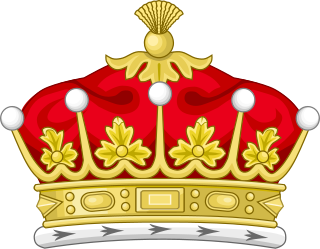
Earl of Hardwicke is a title in the Peerage of Great Britain. It was created in 1754 for Philip Yorke, 1st Baron Hardwicke, Lord High Chancellor of Great Britain from 1737 to 1756. He had already been created Baron Hardwicke, of Hardwicke in the County of Gloucestershire, in 1733, and was made Viscount Royston at the same time as he was given the earldom. These titles were also in the Peerage of Great Britain.

Admiral of the Fleet The Honourable Sir Hedworth Meux, was a Royal Navy officer. As a junior officer he was present at the bombardment of Alexandria during the Anglo-Egyptian War.

Sir Thomas Barrington, 2nd Baronet, 1585 to 18 September 1644, was an English politician and Puritan activist who sat in the House of Commons at various times between 1621 and 1644. In the early stages of the First English Civil War, he helped establish the Eastern Association, one of the most effective elements of the Parliamentarian army.

Sir Roger Townshend, 1st Baronet, was an English landowner and politician who sat in the House of Commons in two parliaments between 1621 and 1629.
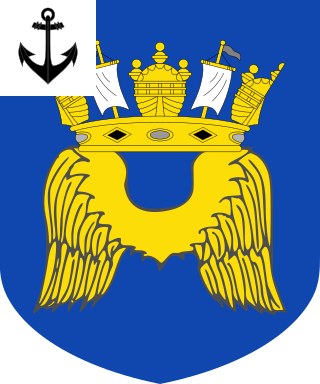
The Seymour, later Culme-Seymour Baronetcy, of High Mount in the County of Cork and Friery Park in the County of Devon, is a title in the Baronetage of the United Kingdom. It was created on 31 May 1809 for the naval commander Admiral Michael Seymour. The second Baronet assumed the additional surname of Culme, which was that of his first wife. The third Baronet was also an admiral in the Royal Navy and notably commanded the Channel Squadron from 1890 to 1892 and the Mediterranean Fleet from 1893 to 1896. The fourth Baronet was a vice admiral in the Royal Navy.

The Beresford, later Beresford-Peirse Baronetcy, of Bagnall in the County of Waterford, is a title in the Baronetage of the United Kingdom. It was created on 21 May 1814 for John Beresford. He was an admiral in the Royal Navy and also represented Coleraine, Berwick-on-Tweed, Northallerton and Chatham in the House of Commons.

Pennyman baronets are holders of one of two baronetcies created for members of the Pennyman family.

The Levinge Baronetcy, of High Park in the County of Westmeath, is a title in the Baronetage of Ireland. It was created on 26 October 1704 for Richard Levinge, Speaker of the Irish House of Commons and Lord Chief Justice of the Irish Court of Common Pleas. The seventh Baronet sat as Liberal Member of Parliament for Westmeath from 1857 to 1865.

Valerie Susan, Lady Meux, was a Devon-born socialite of the Victorian era. She was the wife of Sir Henry Bruce Meux, 3rd Baronet (1856–1900), who came from one of Britain’s richest brewing dynasties, Meux’s Brewery, founded in 1764, which was a major brewer of porter ale in London in the 19th century.
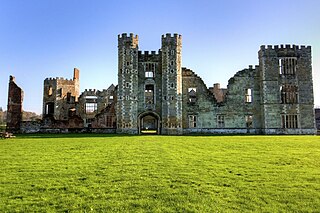
Lady Jane Browne, was an English noblewoman.
The Honourable William Henry Cross was a British Conservative politician.
There have been two baronetcies created for persons with the surname Gifford, one in the Baronetage of England and one in the Baronetage of Ireland. Both creations are extinct.

Sir John Stonhouse, 3rd Baronet, PC (c.1672–1733) was an English landowner and Tory politician who sat in the English and then British House of Commons from 1701 to 1733.
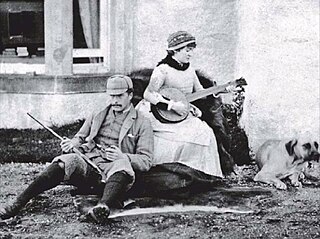
Sir Henry Bruce Meux, 3rd Baronet was an English baronet, the son of Sir Henry Meux, 2nd Baronet (1817–1883), a brewer and politician.
The Robinson Baronetcy, of Batts House in the County of Somerset, was created in the Baronetage of the United Kingdom on 11 November 1823 for George Robinson, who had earlier represented Honiton in Parliament. The title became extinct on the death of the sixth Baronet in 1944.

The Astley, later Astley-Corbett, later Astley Baronetcy, of Everley in the County of Wiltshire, was created in the Baronetage of the United Kingdom on 15 August 1821 for John Astley, Member of Parliament for Wiltshire and Wiltshire North. He was a descendant of Thomas Astley, younger brother of the first Baronet of Patshull. The third Baronet represented Lincolnshire North in Parliament as a Conservative. He married Eleanor Blanche Mary, daughter of Thomas George Corbett. Their eldest son, Francis, the fourth Baronet, assumed by Royal licence the additional surname of Corbett in 1890. His grandson, Francis, the fifth Baronet, was killed in action in World War II.
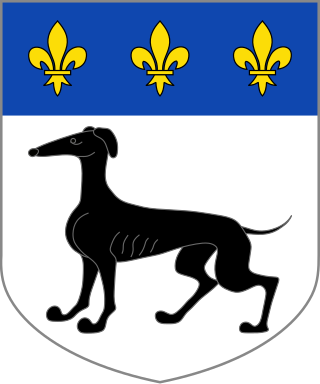
The Halford baronetcy of Wistow, Leicestershire was created on 27 September 1809 in the Baronetage of the United Kingdom for Henry Halford, a prominent society physician who was physician extraordinary to the George III from 1793. Descended maternally from the 5th Baronet of the first creation, born Henry Vaughan, he changed his surname to Halford by Act of Parliament in expectation of inheriting Wistow Hall. The baronetcy became extinct with the death of his grandson, the fourth baronet, in 1897.

The McMahon Baronetcy, of Dublin, was created in the Baronetage of the United Kingdom on 6 May 1815 for William MacMahon, who was Master of the Rolls in Ireland. The title became extinct on the death of the 4th Baronet in 1926.

The Paul baronetcy, of Rodborough in the County of Gloucester was created in the Baronetage of the United Kingdom on 3 September 1821 for the banker John Dean Paul. Onesiophorus Paul, 1st Baronet of the first creation, was his great-uncle, a younger brother of his grandfather Dean Paul.

The Chichester baronetcy, of Arlington Court in the County of Devon, was created in the Baronetage of the United Kingdom on 7 September 1840 for John Chichester, of Arlington, Liberal Member of Parliament for Barnstaple 1831–1840.

















